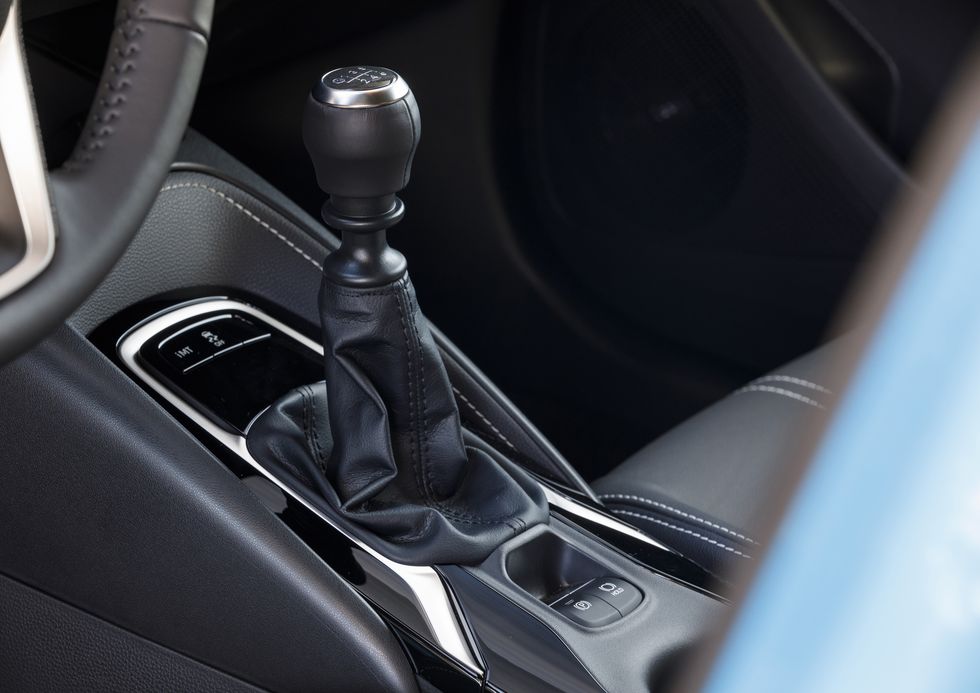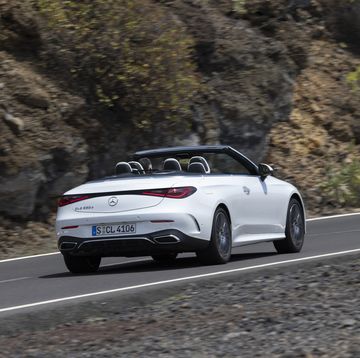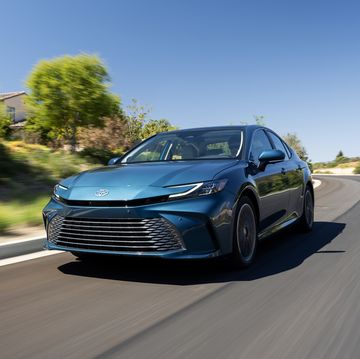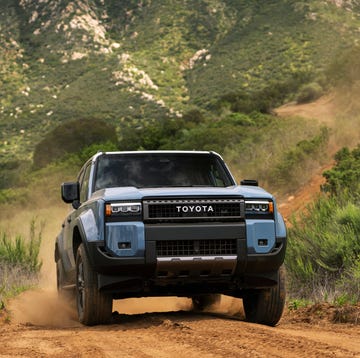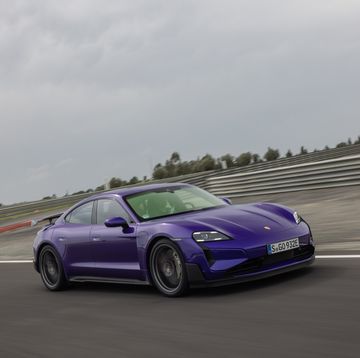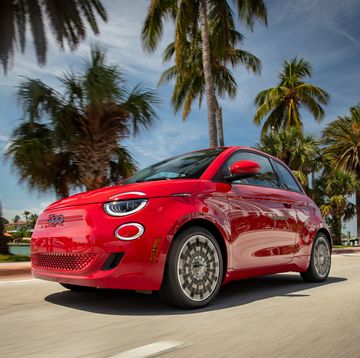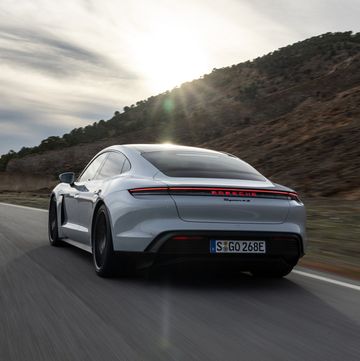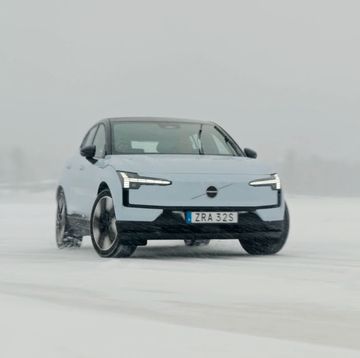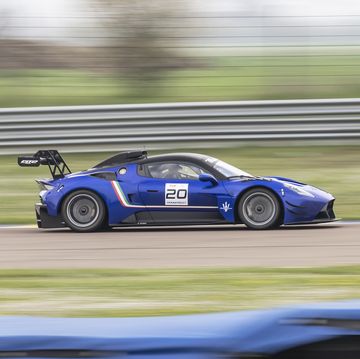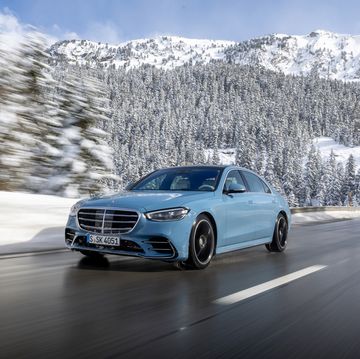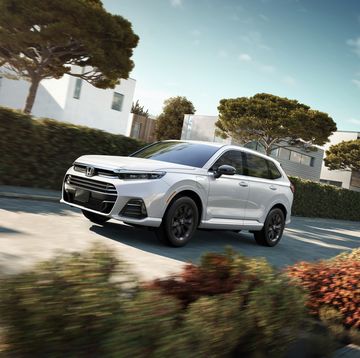Back in the day, Toyota did not use the H-word. When its new body style debuted for the 1976 model year on the Corolla, it was a Liftback. But that was almost 43 years ago, when new oceans boiled with the first stirrings of amoebic life. Today, Toyota has matured beyond euphemisms and embraced reality. Here is the 2019 Toyota Corolla hatchback.
Not Crossing Over
Jack a hatchback up on its suspension, add some wheels and tires that look tough, and the result is a crossover. But Toyota has resisted that temptation, at least with this newest Corolla. (The same cannot be said for Ford and its next-gen Focus.) It’s a hatchback in the purest Volkswagen Golf sense of the word—a front-wheel-drive box with four wheels set out toward the corners, exactly what it appears to be. Sold as the Auris in Europe, it’s not sporty, it’s not luxurious, and yet it’s pretty good-looking.
Toyota is putting big, toothy grilles on everything it makes, and the Corolla hatchback gets one, too. But as toothy Toyota grilles go, this is among the best of the breed. There’s a demarcation between the upper and lower portions that gives the front end a distinctive face that’s kind of blunt. But blunt seems to be the new sleek.
The tail is better. It’s a shapely rump with a liftgate made of polymer resin compound that is framed by LED taillights. The Corolla hatch’s flanks are nicely sculpted, and the profile has an eagerness in its tail-high attitude. Exciting? Let’s not go that far.
Beneath the wrapper is Toyota’s now ubiquitous new platform, the Toyota New Global Architecture (TNGA), which underpins practically all of Toyota’s new cars and crossovers. While the TNGA is flexible enough to accommodate everything from the Prius to the new Avalon and RAV4, it’s a conventional front-drive structure with a pair of struts holding up the nose and a multilink independent suspension supporting the tail. The 103.9-inch wheelbase is a scant 0.1 inch longer than a Golf’s, while the 169.9-inch overall length stretches 2.4 inches beyond that of the VW. The Corolla hatchback’s wheelbase also is 1.5 inches longer than that of the Scion-refugee Corolla iM it replaces in the Toyota lineup. Size-wise, the Corolla hatch is right there alongside the competition.
Trick Transmissions
Toyota calls the new 2.0-liter inline-four in the Corolla hatchback Dynamic Force. Alas, at 168 horsepower it’s not that dynamic nor that forceful. For the time being, Toyota is one of the few companies that hasn’t gone all-in on turbocharged engines. Still, this twin-cam 16-valve engine is up to date with variable valve timing and Toyota’s D4-S system that combines both direct and port fuel-injection systems. And although it has a stout 13.0:1 compression ratio, it will run on regular-grade, 87-octane gasoline.
The 168-hp rating is fully 31 horses better than the 1.8-liter engine used in the former Corolla iM and only two behind the 170-hp turbocharged 1.8-liter in the Golf. That’s deceptive, though, because the VW’s engine has a thick advantage in torque production. The Corolla’s peaks at 151 lb-ft at 4800 rpm, while the Golf’s powerplant is rated at 199 lb-ft, with that total arriving way down at 1600 rpm. In a way, Toyota’s commitment to natural aspiration is admirable, but modern turbocharged engines simply provide more thrust.
Both manual and automatic gearboxes are offered in the Corolla hatch. The manual is a sweet-shifting six-speed with fourth gear nearly a direct drive at 1.025:1 and both fifth and sixth being overdrives. The cool bit here is a rev-matching feature that controls engine speeds during both upshifts and downshifts to smooth out transitions between gears. In limited exposure during this introductory drive, it was an impressive system.
The automatic is an interesting twist on the continuously variable transmission (CVT). Its low range is covered by a first gear that’s a real, physical, toothed 3.377:1 thing. Then a clutch engages and moves the power flow over to the belts and cones of a CVT working between 2.236:1 and 0.447:1. The CVT also gets 10 simulated gear ratios and paddle shifters. Again, our time with it was limited, but initial impressions are that it works well. (You can read more about Toyota’s new engine and CVT here.)
Cleanly Clean-ish
Competing at the most price-sensitive end of the market, Toyota couldn’t afford to splurge on the interior pieces. But almost counterintuitively, the discipline of keeping costs down has resulted in an exceptionally clean design executed with restraint.
The major instrumentation in the top XSE model is a 7.0-inch digital screen flanked by a tachometer on one side with fuel and temperature gauges on the other. The SE makes do with a 4.2-inch screen at the center. Both models get an 8.0-inch central touchscreen to control the Entune infotainment system and other gadgetry. Apple CarPlay is finally available in a Toyota, although Android Auto is still a no-show.
Even in base SE trim the front seats are well shaped and manually adjustable six ways. In the fancier XSE, the seats are covered in leather and fabric, and the fronts are heated and offer eight-way power adjustment for the driver. The rear seat in both is split to fold 60/40.
While the accommodations up front are swank for the class, the rear compartment is less generous. Unlike the outgoing Corolla sedan, which has extraordinary rear legroom for a compact, the hatch is more intimate, along the lines of the Golf. If keeping the Uber customers happy is what matters, you may want to get the current sedan or hold out for the new one (which has yet to debut as of this writing).
Drives Like a Corolla
Toyota is finally getting the hang of electrically assisted power steering, and the Corolla hatchback’s sensitive and quick system reflects that. This is a composed small car that rides well, communicates accurately with the driver through its leather-covered steering wheel, and is (barely) powerful enough to be entertaining.
The last Corolla iM we tested, which was equipped with a CVT, traipsed from zero to 60 mph in a languid 9.1 seconds. The new Corolla hatch should be about a half-second quicker than that—and even better with the six-speed manual transmission. EPA ratings are still pending, but they should at least match the outgoing iM’s 27 mpg in the city and 35 on the highway.
There’s potential in this car that remains potential. The TNGA platform is flexible enough to accept all-wheel drive, and a turbocharged version of the 2.0-liter engine could be zesty. Yeah, it’s just a dream. But if you’re going to dream, dream big.
As it is, the new Corolla hatchback has attractive styling, a fine ride, and Toyota’s reputation for quality going for it. Prices should bracket the $20,000 mark, with the SE being slightly less and the XSE a bit more. And if it doesn’t sell well, maybe Toyota could try calling it a Liftback.
Specifications
SPECIFICATIONS
2019 Toyota Corolla Hatchback
Vehicle type: front-engine, front-wheel-drive, 5-passenger, 4-door hatchback
ESTIMATED BASE PRICES
SE, $19,900;
XSE, $21,000
ENGINE TYPE
DOHC 16-valve inline-4, aluminum block and head, port and direct fuel injection
Displacement: 121 in3, 1987 cm3
Power: 168 hp @ 6600 rpm
Torque: 151 lb-ft @ 4800 rpm
TRANSMISSIONS
6-speed manual, continuously variable automatic with 1 fixed ratio and manual shifting mode
DIMENSIONS
Wheelbase: 103.9 in
Length: 169.9 in
Width: 69.9 in
Height: 57.1 in
Cargo volume: 18.0 ft3
Curb weight (C/D EST): 3100 lb
PERFORMANCE (C/D EST)
Zero to 60 mph: 8.7 sec
Zero to 100 mph: 25.0 sec
Standing ¼-mile: 16.7 sec
Top speed: 115 mph
EPA FUEL ECONOMY (C/D EST)
Combined/city/highway: 31–32/28–29/36–37 mpg

John Pearley Huffman has been writing about cars since 1990 and is getting okay at it. Besides Car and Driver, his work has appeared in the New York Times and more than 100 automotive publications and websites. A graduate of UC Santa Barbara, he still lives near that campus with his wife and two children. He owns a pair of Toyota Tundras and two Siberian huskies. He used to have a Nova and a Camaro.


